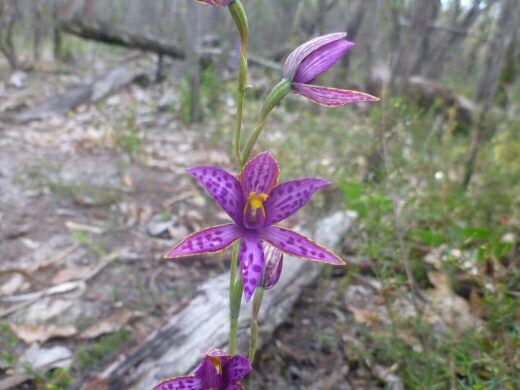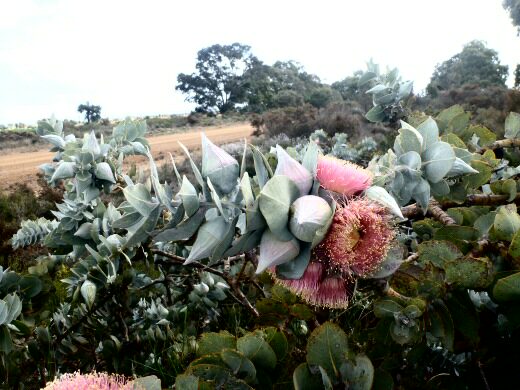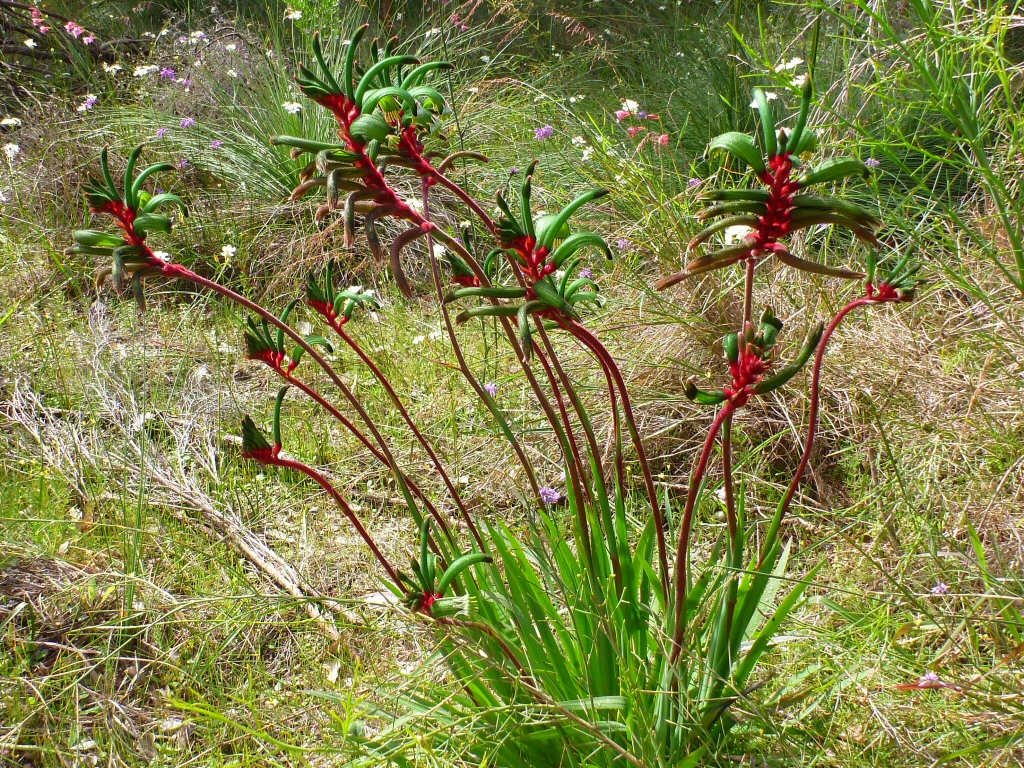In search of the Queen of Sheba while feeling ‘as fit as a mallee Bull’ Banksia
Late last month I had the good fortune to be able to get over to the floral wonderland that is south west Western Australia for a bit of plant therapy. Forget retail therapy, plant therapy in WA is a much more satisfying thing! There are literally thousands of amazing plants to focus on over there from kangaroo paws to trigger plants, but one of the highlights of my trip was an expedition to find the legendary ‘Queen of Sheba’, Thelymitra variegata. Orchids are one of those truly amazing groups of plants that can capture the imagination and make people do absolutely extraordinary things in their honour. In particular, the terrestrial (ground) orchids of south west Western Australia are world renowned for their incredibly intricate, delicate, beautiful forms. One that really drives orchid enthusiasts crazy is a rather rare one that has taken on the intriguing epiphet of ‘Queen of Sheba’ as its (none too) common name. My friend Andrew Simpson is one such orchid lover and we journeyed south of Perth to find what turned out to be a single plant of the Queen of Sheba near Bunbury on the south coast.
Whilst down south we also ventured down to Cape Leeuwin, the intersection point of the Indian and Southern Oceans. It is well worth a tour in the lighthouse for the spectacular views which often include whale sightings in spring. The bushland around Cape Leeuwin is also a treasure trove of all sorts of plant species but my favourite there are some dwarf populations of the bull banksia (Banksia grandis) which grow no more than knee high (this species normally grows into a large shrub to small tree). The nectar rich blooms are a magnet for various small birds such as the local honeyeaters.
Another favourite of mine is the largest blooming of all the flowering gums, Eucalyptus macrocarpa, The Rose of The West or mottlecah (in Aboriginal language). The individual flowers of this rather rare eucalypt can be up to 15cms (6 inches) across and are one of the most spectacular of all Western Australian wildflowers. Sadly, most of the wild populations of this wonderful Australian are reduced to roadside verges and it was on one of these about a hundred kms north of Perth and the Brand Highway that we came across a stand that had recently been burnt as well as some that hadn’t that were in full flower. It was great to see extensive seedling regeneration in the burnt area as well as thriving flowering plants in the unburnt road verges.
I can never go past wild polpulations of the dwarf kangaroo paw, Anigozanthos humilis, which is also known as cat’s paw for some reason only known to the Western Australians. Personally, I can’t see the likeness with a cat’s paw…I mean, why not Quokka paw??? This, and the red and green kangaroo paw (Anigozanthos manglesii), are by far the most common paws encountered both north and south of Perth and you should be able to find them commonly in spring, especially if you look for areas that have been burnt in the previous couple of years along the roadsides.
‘The Australian Native Garden’ and Bush Tucker Fertiliser
I have been rather busy this year on several creative fronts and I am very proud to announce the birth of my new book ‘The Australian Native Garden ‘, written with my Victorian co-author A.B. Bishop. AB was my former researcher at Gardening Australia and years of collaboration there led us to working on this new book together which combines my love of Australian plant cultivars with AB’s passion for using indigenous native plants in the garden. More about the book in the next newsletter.
My other creative outlet has been to help design a new fertiliser with my friend and colleague, soil scientist Simon Leake of Sydney Environmental and Soils Laboratory. The fertiliser will be produced by South Australian company Neutrog and will be appropriately called ‘Bush Tucker’, and we are working in conjunction with the Australian Plant Society to trial it before commercial release. As part of this trial I would love to involve you, my dear readers, and may be able to offer you a trial pack of ‘Bush Tucker’ for you garden depending on your location. This fertiliser is designed to be suitable for every native plant in your garden, including the most phosphorus sensitive members of the Proteaceae family.
Bushcare’s Major Day Out (BMDO)
I have been involved with this outstanding event for a number of years now. Bushcare’s Major Day Out is a national day designed to encourage us all to take part in the restoration and maintenance of our remaining bushland. There is a close association with the Landcare organisation but not in every case. But the one thing all the BMDO sites have in common is an inspiring community spirit to look after the bush and all the wonderful creatures within as well as the plant communities.
In 2015 the main date will be Sunday 13th September, and this is part of Landcare Week. However, the day for Bushcare’s Major Day Out is flexible, so individual sites could choose slightly different dates. In my case I am attending an event on September 8th, put on by Lake Macquarie Landcare touring around 4 different Bushcare sites in the Hunter Valley. Have a look on the BMDO website http://www.bushcaresmajordayout.org/about/about-the-major-day to find the nearest location to you, there are many dozens of them around the country!
Bushcare’s Major Day Out is a day specifically designed to give us the opportunity to find out what is being done and what can be done in our own neighbourhood. It’s a fun day where anyone, young and old, can work alongside and learn from experts and experienced volunteers. There are a range of activities depending on the location; walks, planting, weed removal, photography workshops as well as native plant identification and well celebrated morning teas.
This is a great opportunity to explore the idea of becoming a Landcare/Bushcare volunteer if you have the time and location!






